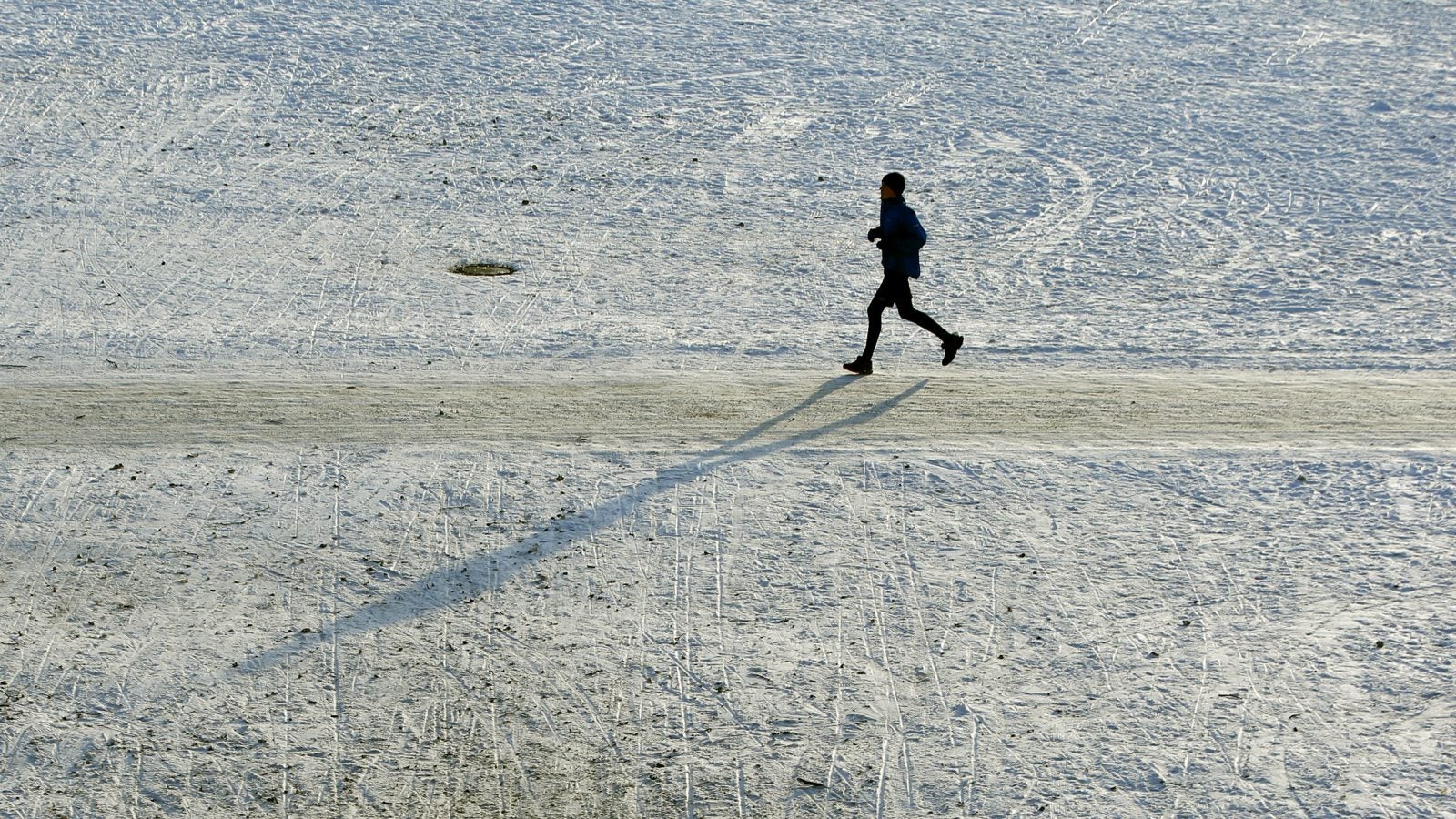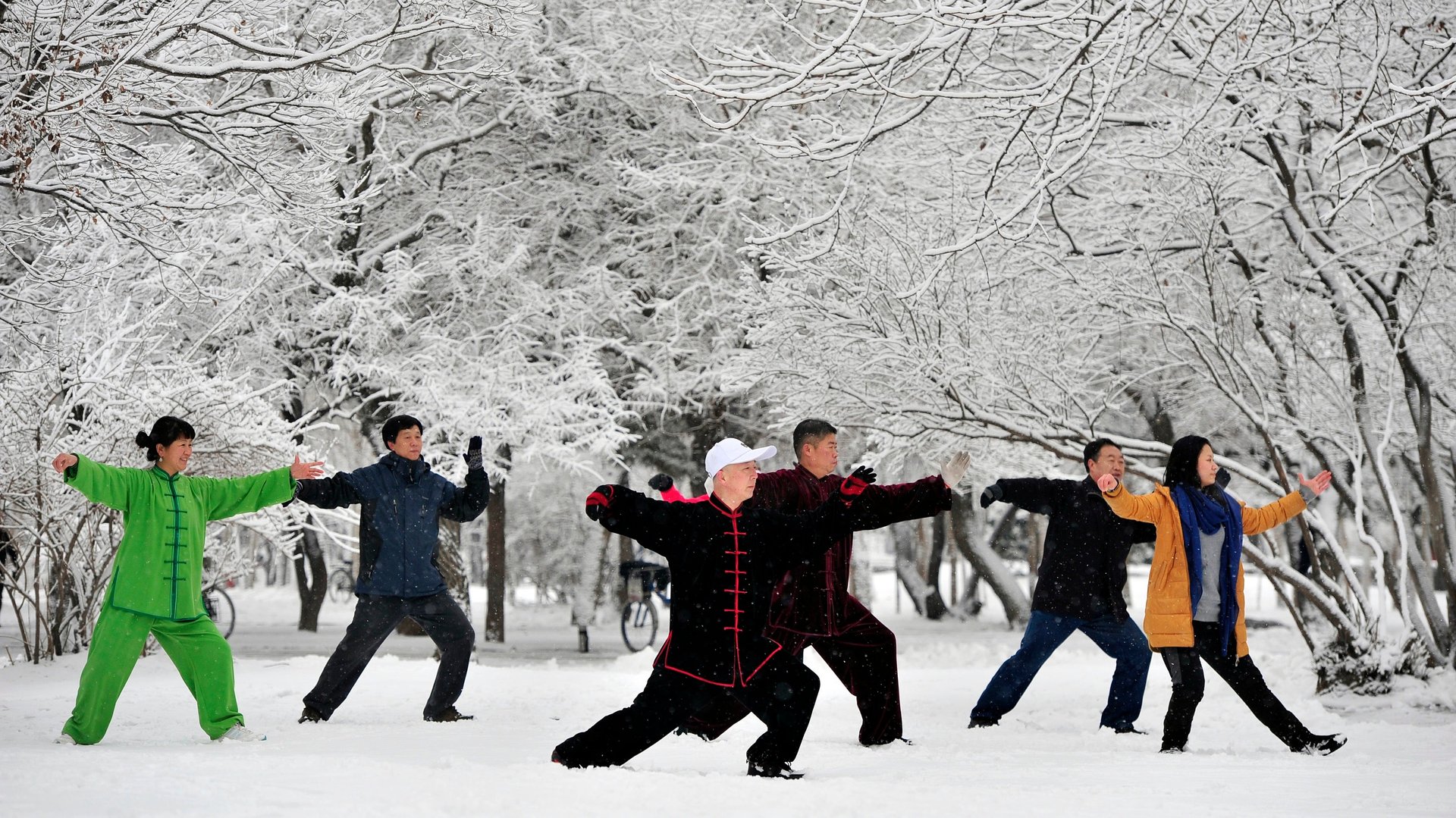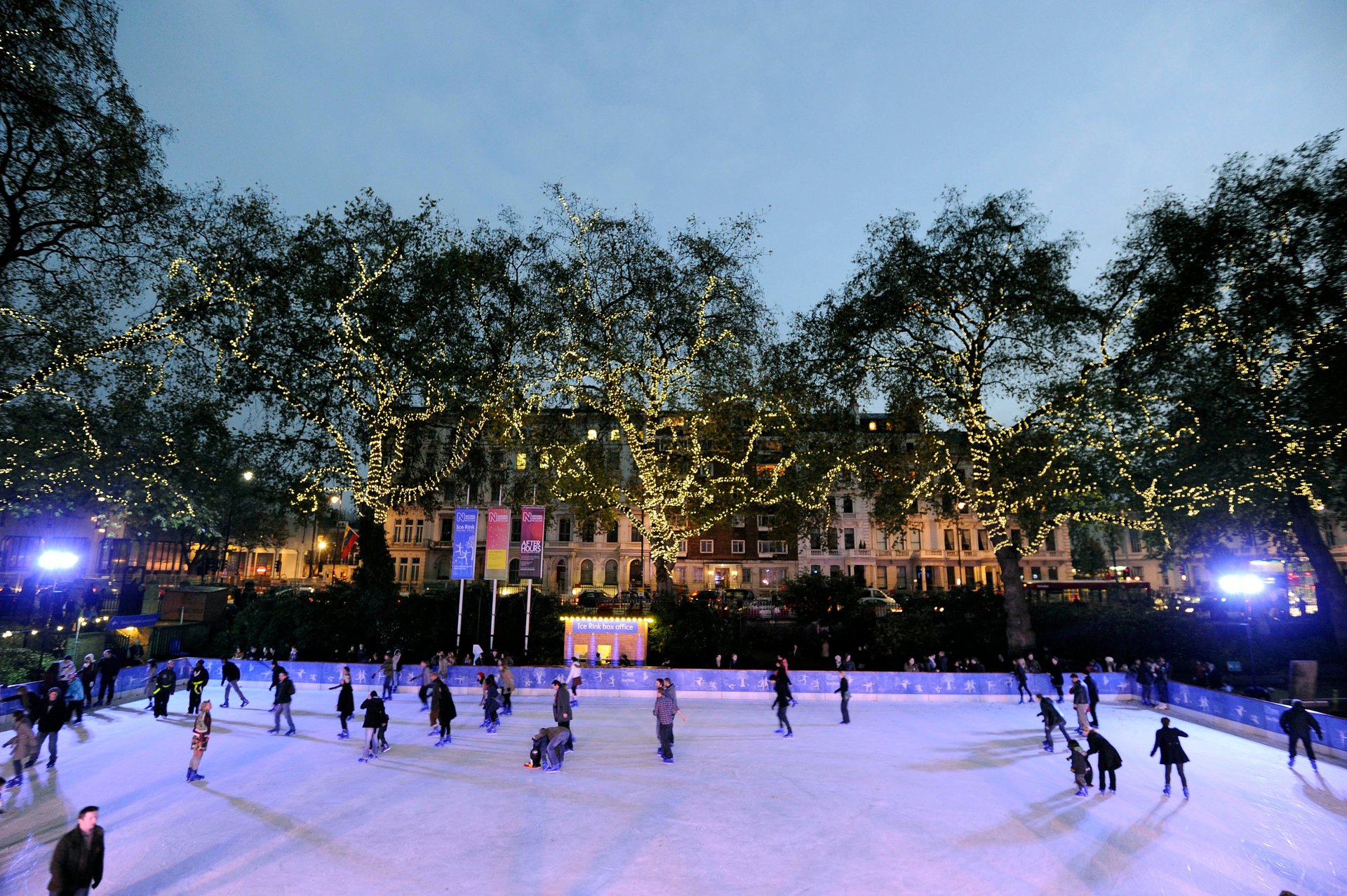The complete guide to exercising in winter
This week in London, the sun sets at 3.50pm. We’re waking up in the dark, leaving work in the dark, and spending a good proportion of the intervening time underground or desk-bound. Hearty meals and firesides seem more attractive than the chilly outdoors, or a busy gym. (If you live in the global south, though, read this.)


This week in London, the sun sets at 3.50pm. We’re waking up in the dark, leaving work in the dark, and spending a good proportion of the intervening time underground or desk-bound. Hearty meals and firesides seem more attractive than the chilly outdoors, or a busy gym. (If you live in the global south, though, read this.)
Exercise can be hard in the northern hemisphere in winter, and perhaps especially so in cities bereft of the birdsong or starry skies that make the countryside joyous in any season. But identifying what stops us, planning well, and creating the right conditions can make winter work-outs some of the most rewarding of the year.
Find the motivation
Good news: Research from the University of Maastricht in the Netherlands suggests that once you’ve acclimatized, exercising in the cold burns fat quicker than more comfortable temperatures, because deposits of so-called “brown fat” are activated as the body learns to get warmer, faster. So winter might even be better for weight management than those jogs in more pleasant weather.
Secondly, exercise is a great way to beat winter blues. Studies link increased exercise to better moods for people with depression and seasonal affective disorder (SAD). If you’re able exercise outside during daylight hours (think running at lunchtime), you’ll get more of that elusive vitamin D from sunlight which is good for bones, teeth, and muscles.
For many, the rush of endorphins we get from exercise is reason enough to prove it’s good for us. But how do you translate that knowledge into action?
Prepare well
Planning and writing down exercise sessions ahead of time makes it more likely you’ll do them, and if you’re exercising before work, smooth the transition out of bed as much as possible. Lay out exercise clothes and shoes the night before, pack your work bag, and plan both your outfit for the day, and your post work-out breakfast.
For outdoor winter exercise, the right clothing will make a huge difference to your experience. Jackie Newton, an endurance coach, suggests layering up for warmth, with exercise-specific fabrics that dry quicker than cotton. Plan on:
- A lightweight top made of technical fabric
- Lightweight fleece for dry weather
- Breathable, light waterproof for rain
- Leggings, running tights, tracksuit trousers or shorts
- A beanie hat
- Gloves
Remember to warm up, for example with light jogging, before really going for it.
Be safe
Bright colors and reflective strips are best for dark winter nights and mornings. If your clothes are dark, then a reflective bib or head-torch will keep you safer. Stick to well-lit, familiar areas.
Most experts suggest that if it’s really icy out, reschedule outdoor exercise—injuries take a long time to heal and it’s not worth the risk. Some cyclists prefer mountain-biking in winter, and trail-running is less ice-prone than street running, if those are options. If you need music or a podcast, turn the volume low and just listen with one ear-bud, staying aware of what’s going on around you.

Find a way to stay with it
Getting out of the door can be the hardest part of exercising in winter. Barbara Brunner, a personal trainer who says she actually prefers running outside in winter because it feels more of an adventure, suggests having a companion to combat those moments where we weigh up whether to stick to plans.
“It’s so much easier to have a training partner,” she said. “If [people] have someone else who they’ve made a promise to…then they find it easier to get their ass out of bed. And also it’s nicer because you can chat to each other, or you can push each other in the moment.” If you can’t cajole a buddy into ensemble exercise, joining a running club, bootcamp, or group swim session could keep you on track.
Setting a goal is another great way to stay motivated; just make sure its achievable. Sign up for an organized run in three months time, and then follow a training program to get you there (like this one for five kilometers, complete with podcasts.) You don’t have to work out every day: Thirty minutes of cardio exercise three times a week is much better than nothing.
It’s not just frosty mornings
If the idea of wintry running or cycling still isn’t appealing, consider exercising indoors. Gyms are an obvious solution; make them more bearable by arranging your day to avoid busy times.
Winter can also be a time for indoor activities you might not get around to otherwise. Dance, squash, hot or regular yoga, circuit training, and swimming, are all great ways to spend an hour in a long evening that might otherwise be spent eating, drinking, and looking at screens.
Embrace the winter
If you live in the Alps or the Rockies, winter exercise blues are unlikely to be a problem. For others, skiing can be a distant, expensive dream. But if a few days on the slopes is an option, use it as motivation to train the rest of the winter—helping you avoid injuries and make the most of your time away.
Ice skating is available in lots of major cities, and beautiful pop-up rinks are becoming increasingly popular.

Brunner says it’s important to find something you love to do rather than making exercise a chore, such as going to an outdoor heated pool with friends, where the warmth of the water contrasts with the sharpness of the air.
Finally, winter is a beautiful time to do one of the most-overlooked forms of exercise: walking. Try this on a weekend: Get up early and take a train out of the city. Plan a walk that lasts from 11 until 3, ending at a pub or café, so you can eat and get warm before jumping on a train home.
Reward yourself
There’s a debate about the rewards-after-exercise question. Some suggest a small food reward is a good motivation. On the other side, those who think connecting exercise with snacks is a mistake.
The ideal is probably to try and frame exercise as a pleasure, not a punishment—think of it as personal time, or a time to think, or listen to podcasts.
Likewise, food ideally shouldn’t be a reward. Whatever you eat, make sure it’s delicious and that you take time over it, which will make it feel more satisfying. If you’re working out, you need to eat some energy-rich carbohydrates—like whole grains and potatoes with the skins on—and some protein, which helps build and repair muscle: oily fish, eggs, and beans all count. Add vegetables and salads, too.
If it helps motivate you to exercise and form a habit, small food rewards—like a square or two of chocolate—can work. But research also shows that people who exercise can undo a lot of the work making themselves healthier because they feel entitled to eat more. Here are some non-food-based rewards, especially for winter:
- Join a pool or gym with a sauna, and end your workout with a welcome blast of heat,
- Soak after a run in a warm bath,
- Book yourself a massage at the end of a month of wintery work-outs,
- Think about what you’d find most relaxing (sleep, TV, reading recipe books) and let yourself do it for a chunk of time once you’ve exercised,
- Take rest days: They’re important for allowing muscles to recover, and they feel all the sweeter when you’ve been out in the cold on the other days of the week.